|
|
 
 Byzantine Matters Byzantine Matters 
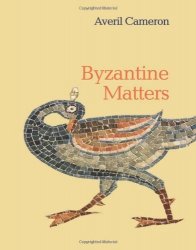 Author:Averil Cameron Byzantine Matters Princeton University Press; First Edition 2014 ISBN:0691157634 Format:epub Size:3.57 Mb Pages:184 Language:English For many of us, Byzantium remains "byzantine"--obscure, marginal, difficult. Despite the efforts of some recent historians, prejudices still deform popular and scholarly understanding of the Byzantine civilization, often reducing it to a poor relation of Rome and the rest of the classical world. In this book, renowned historian Averil Cameron presents an original and personal view of the challenges and questions facing historians of Byzantium today. The book explores five major themes, all subjects of controversy. "Absence" asks why Byzantium is routinely passed over, ignored, or relegated to a sphere of its own. "Empire" reinserts Byzantium into modern debates about empire, and discusses the nature of its system and its remarkable longevity. "Hellenism" confronts the question of the "Greekness" of Byzantium, and of the place of Byzantium in modern Greek consciousness. "The Realms of Gold" asks what lessons can be drawn from Byzantine visual art, and "The Very Model of Orthodoxy" challenges existing views of Byzantine Christianity. Throughout, the book addresses misconceptions about Byzantium, suggests why it is so important to integrate the civilization into wider histories, and lays out why Byzantium should be central to ongoing debates about the relationships between West and East, Christianity and Islam, Catholicism and Eastern Orthodoxy, and the ancient and medieval periods. The result is a forthright and compelling call to reconsider the place of Byzantium in Western history and imagination.
 
 Medieval Technology and Social Change Medieval Technology and Social Change 
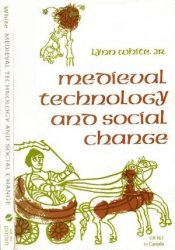 Medieval Technology and Social Change Author: Lynn White Oxford University Press ISBN: 0195002660 1974 Pages: 224 Format: PDF Size: 75.18МБ Language: English In Medieval Technology and Social Change, Lynn White considers the effects of technological innovation on the societies of medieval Europe: the slow collapse of feudalism with the development of machines and tools that introduced factories in place of cottage industries, and the development of the manorial system with the introduction of new kinds of plows and new methods of crop rotation. One invention of particular import, writes White, was the stirrup, which in turn introduced heavy, long-range cavalry to the medieval battlefield. The development thus escalated small-scale conflict to "shock combat." Cannons and flamethrowers followed, as did more peaceful inventions, such as watermills and reapers.
 
 Lost Enlightenment: Central Asia's Golden Age from the Arab Conquest to Tamerlane Lost Enlightenment: Central Asia's Golden Age from the Arab Conquest to Tamerlane 
 Author: S. Frederick Starr Lost Enlightenment: Central Asia's Golden Age from the Arab Conquest to Tamerlane Princeton University Press 2013 Format: epub Size: 11.4 Mb Language: English In this sweeping and richly illustrated history, S. Frederick Starr tells the fascinating but largely unknown story of Central Asia's medieval enlightenment through the eventful lives and astonishing accomplishments of its greatest minds--remarkable figures who built a bridge to the modern world. Because nearly all of these figures wrote in Arabic, they were long assumed to have been Arabs. In fact, they were from Central Asia--drawn from the Persianate and Turkic peoples of a region that today extends from Kazakhstan southward through Afghanistan, and from the easternmost province of Iran through Xinjiang, China. Lost Enlightenment recounts how, between the years 800 and 1200, Central Asia led the world in trade and economic development, the size and sophistication of its cities, the refinement of its arts, and, above all, in the advancement of knowledge in many fields. Central Asians achieved signal breakthroughs in astronomy, mathematics, geology, medicine, chemistry, music, social science, philosophy, and theology, among other subjects. They gave algebra its name, calculated the earth's diameter with unprecedented precision, wrote the books that later defined European medicine, and penned some of the world's greatest poetry. One scholar, working in Afghanistan, even predicted the existence of North and South America--five centuries before Columbus. Rarely in history has a more impressive group of polymaths appeared at one place and time. No wonder that their writings influenced European culture from the time of St. Thomas Aquinas down to the scientific revolution, and had a similarly deep impact in India and much of Asia.
 
 The Big Golden Book of Knights and Castles The Big Golden Book of Knights and Castles 
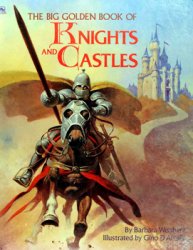 Author: Barbara Weisberg The Big Golden Book of Knights and Castles Golden Book 1993 Format: PDF Pages: 72 Language: English Size: 14.8 MB The Middle Ages--the era of brave knights, majestic castles, and royal pageantry--comes to vivid life in this exciting book. Young readers will discover how a castle was built, how knights were chosen and trained, what it was like to compete in a jousting tournament or to enjoy a lavish feast in the castle's great hall, more. In addition, the book includes lively accounts of King Arthur and his Knights of the Round Table, Joan of Arc, the Black Prince, and other fascinating figures from the days of chivalry.
 
 The Development of the Komnenian Army 1081-1180 The Development of the Komnenian Army 1081-1180 
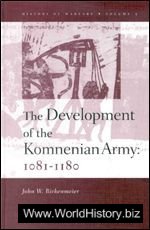 Author: John W. Birkenmeier The Development of the Komnenian Army 1081-1180 Brill Academic Pub 2002 263 Format: Pdf Size: 13 MB Language: English The emperors of the Komnenian dynasty orchestrated the economic and military renewal of the Byzantine Empire. In 1081, Alexios I became emperor of a bankrupt and diminished empire. In 1180, Manuel I ruled the most powerful state in the eastern Mediterranean, capable of sending expeditions to Egypt, Hungary, Italy, and Palestine. This study examines how the Komnenian emperors restored the Byzantine state by building a professional army of mercenaries and Byzantine citizens. It examines the army's ethnic composition, tactics, equipment, and its financial support.
 
 In the Footsteps of William Wallace: In Scotland and Northern England In the Footsteps of William Wallace: In Scotland and Northern England 
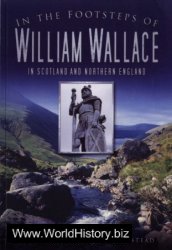 In the Footsteps of William Wallace: In Scotland and Northern England Author: Alan Young & Michael J. Stead History Press ISBN: 978 0752456386 2010 Language: English Pages: 104*2 Format: PDF Size: 57,1 mb For nearly 700 years debate has raged over the true nature of William Wallace and his role in Scotland's turbulent history. Was he the 'Braveheart' of Blind Harry's legendary account, the bold, but savage hero of the Scottish wars? Or, as some contemporary chroniclers attested, nothing but a villainous thief and vagrant fugitive? This book draws on a wide range of contemporary and modern sources to look behind the figure of legend to find Wallace's true character. These superb photographs trace Wallace's life from his modest upbringing in south-west Scotland to his remarkable victory as a 'guerilla' leader and military commander at Stirling Bridge, and to his eventual betrayal, capture and painful execution seven years later. This is an essential travel companion for a journey through the landscapes and places associated with Wallace in Scotland and Northern England, and a vibrant new insight into the reality of Scotland's most famous battlefield hero.
 
 Basil II and the Governance of Empire (976-1025) Basil II and the Governance of Empire (976-1025) 
 Author: Catherine Holmes Basil II and the Governance of Empire (976-1025) Oxford University Press ISBN: 0199279683 2006 Format: PDF Size: 14,5 МБ Language: English This is the first book-length study in English of the Byzantine emperor Basil II, the "Bulgar-slayer." Basil presided over a Byzantium which was the superpower of the eastern Mediterranean and the Middle East in the century before the Crusades. Catherine Holmes peels away the layers of later interpretations to reveal an empire that was governed by a potent mixture of subtle persuasion and brute force.
 
 The Making of the Slavs: History and Archaeology of the Lower Danube Region, c. 500-700 The Making of the Slavs: History and Archaeology of the Lower Danube Region, c. 500-700 
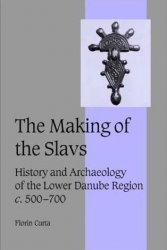 Author: Florin Curta The Making of the Slavs: History and Archaeology of the Lower Danube Region, c. 500-700 Cambridge university press 2001 Format: pdf Size: 9.65 mb Language: English This book offers a new approach to the problem of Slavic ethnicity in southeastern Europe between c. 500 and c. 700. The author shows how Byzantine authors "invented" the Slavs, in order to make sense of political and military developments taking place in the Balkans. Making extensive use of archaeology to show that such developments resulted in the rise of powerful leaders, responsible for creating group identities and mobilizing warriors for successful raids across the frontier. The author rejects the idea of Slavic migration, and shows that "the Slavs" were the product of the frontier.
 
 Time Frame AD 1300-1400 - The Age of Calamity Time Frame AD 1300-1400 - The Age of Calamity 
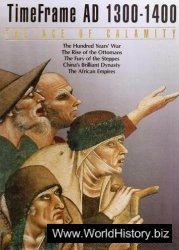 Author: Collective Time Frame AD 1300-1400 - The Age of Calamity Time-Life Books 1989 Format: PDF Pages: 184 Language: English Size: 33 MB Surveys fourteenth-century world history in the eastern hemisphere. Content: The Hundred Year's War The Rise of the Ottomans The fury of the steppes China's Brilliant dynasty.
 
 Crusader Archaeology: The Material Culture of the Latin East Crusader Archaeology: The Material Culture of the Latin East 
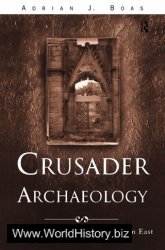 Crusader Archaeology: The Material Culture of the Latin East Author: Adrian J. Boas Routledge 1999 Pages: 267 Language: English Format: pdf Size: 14.7 Mb Crusader Archaeology draws together recently excavated material culture in Israel, Cyprus, Syria and Jordan to examine what life was like for the Crusaders in their territory and how they were influenced by their newfound neighbors. Chapters discuss urban and rural settlements, surveying agriculture, industry, military, church, public and private architecture, arts and crafts, leisure pursuits, death and burial, and building techniques. This lavishly illustrated volume creates a vivid portrait of the period.
 
 Byzantine Armies 886-1118 Byzantine Armies 886-1118 
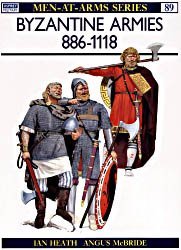 Byzantine Armies 886-1118 (Men-at-arms 89) Osprey Publishinf Ltd 2003 Format: Pdf Size: 18 Mb Language: English
 
 Time Frame AD 800-1000 - Fury of the Northmen Time Frame AD 800-1000 - Fury of the Northmen 
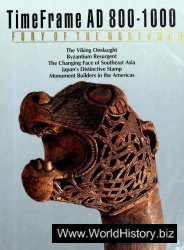 Author: Collective Time Frame AD 800-1000 - Fury of the Northmen Time-Life Books 1988 Format: PDF Pages: 182 Language: English Size: 31.7 MB Contents: The Viking Onslaught, Byzantium Resurgent, The Changing Face of Southeast Asia, Japan's Distinctive Stamp, Monument Builders in the Americas.
 
 Renaissance Armies 1480-1650 Renaissance Armies 1480-1650 
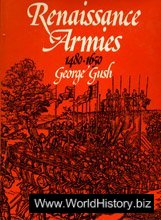 Author: George Gush Renaissance Armies 1480-1650 Patrick Stephens Ltd, Cambridge Quality: Pages: 128 Language: English 1975 Format: PDF Size: 122 МБ
 
 The Age of Exploration: From Christopher Columbus to Ferdinand Magellan The Age of Exploration: From Christopher Columbus to Ferdinand Magellan 
 Author: Kenneth Pletcher The Age of Exploration: From Christopher Columbus to Ferdinand Magellan Rosen Education Service ISBN: 1622750195 2013 Format: EPUB Size: 16,6 МБ Language: English Pages: 163 The Britannica Guide to Explorers and Adventurers People have been pushing boundaries in search of fame and fortune for centuries, from ancient times to the present day. A quest for knowledge has been another impetus for testing personal and universal limits, as has the thrill of adventure. Within these pages, readers will discover detailed accounts of the lives of explorers and adventurers throughout the ages, men and women whose journeys have been remarkable, whatever their motivation.
 
 Empire of the Islamic World Empire of the Islamic World 
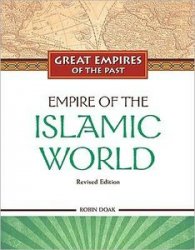 Author: Robin S. Doak Empire of the Islamic World (Great Empires of the Past) Chelsea House Publications 2010 ISBN: 1604131616 Format: PDF Size: 15,2 МБ Language: English Pages: 144 While Europe was in the Dark Ages, classical learning from ancient Greece, Rome, and Persia was being preserved and advanced in Islamic libraries and universities. From 632 to 1258, the Islamic Empire was the most powerful and cultured domain in the world. Less than a century after its founding, the empire had grown from a loose confederation of desert tribes into the largest empire in the history of the world, larger than the mighty Roman Empire at its peak. "Empire of the Islamic World, Revised Edition" opens with a brief summary of the Islamic Empire, and gives a sense of the world and geographic area in the years leading up to the empire. The book continues by exploring the empire's society, culture, and daily life including architecture and art; astronomy and mathematics; customs, holidays, sports, and foods; government systems; industry and trade; language and literature; military structure and strategy; and, mythology and religious beliefs.
 
 The Myth of Muslim Barbarism and Its Aims The Myth of Muslim Barbarism and Its Aims 
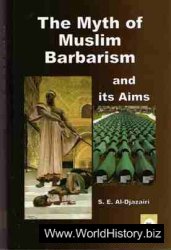 Author: S. E. Al-Djazairi The Myth of Muslim Barbarism and Its Aims Bayt Al-Hikma Press 2007 Format: PDF Size: 10 Mb Language: English The cultural, scientific and economic acheivements of Islamic civilisation over the last 1400 years could be a great inspiration to humanity today. Unfortunately, for centuries, the impact of Islamic civilisation has been obscured and its appeal has been countered by the creation and repetition of the myth of the Barbaric Muslim. From the Pope's imaginative justifications for the first crusade in 1095 down to the untouchable death squad roaming US occupied Iraq in 2007, the myth has been told and retold and it has convinced many of the great threat of Muslim fundamentalism, terrorism, extremism, fanaticism, irrationality, etc. As the threat gets magnified, ever more violent measures become justified as necessary to eliminate it - up to and including genocide itself. Wars and sanctions that have killed millions of Muslims have been justified with many pretexts that turned out to be untrue, but the main false pretext is the myth of Muslim barbarism. In this Book, S E Al-Djazairi complements his substantial works on Islamic Civilisation by detailing the nature of this myth, how it was built through the ages and what forms it takes today. He demonstrates the fallacies at the heart of each of its aspects including the charges of intolerance, oppression of women, slave trading, cruelty to captives, Muslim inferiority etc. after refuting these claims he shows the real aims of those who propagate and benefit from them.
 
 British Fortifications Through the Reign of Richard III: An Illustrated History British Fortifications Through the Reign of Richard III: An Illustrated History 
 Jean-Denis G. G. Lepage British Fortifications Through the Reign of Richard III: An Illustrated History McFarland 2012 ISBN: 9780786459186 Pages: 318 Format : PDF Size : 29,8 MB Language: English From the time the Romans first set foot on England's shore in 55 BC, the British Isles have faced a constant threat of foreign invasion. As a result, the landscapes of England, Scotland, and Ireland are dotted with ancient defensive fortifications as varied as their makers. Iron Age Celtic "hillforts," Roman castra and Hadrian's Wall, Anglo-Saxon dykes and Alfredian burhs, Norman mottes and stone-keeps, Edwardian castles, Irish tower houses they all served to repel ancient intruders and many still stand as tangible relics of a remarkable past. This study chronicles the development of British fortifications from prehistoric times through the end of Richard III's reign in 1485, providing the history of each type of structure, relevant examples, and information on weapons and siege warfare. More than 250 illustrations vividly detail each ediface's construction and configuration.
 
 The Middle Ages: An Illustrated History The Middle Ages: An Illustrated History 
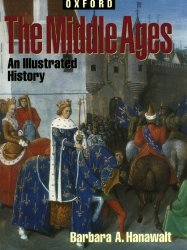 The Middle Ages: An Illustrated History Author: Barbara Hanawalt Oxford University Press 1998 Pages: 161 Format: PDF Size: 29 Mb Language: English A brisk narrative of battles and plagues, monastic orders, heroic women, and knights-errant, barbaric tortures and tender romance, intrigue, scandals, and conquest, The Middle Ages: An Illustrated History mixes a spirited and entertaining writing style with exquisite, thorough scholarship. Barbara A. Hanawalt, a renowned medievalist, launches her story with the often violent amalgamation of Roman, Christian, and Germanic cultures following the destruction and pillaging of the crown jewel of the Roman Empirethe great city of Rome. The story moves on to the redrawn map of Europe, in which power players like Byzantium and the newly-established Frankish kingdom begin a precarious existence in a "sea of tribes" (in the words of a contemporary).
 
 Sea Peoples of the Bronze Age Mediterranean c.1400 BC-1000 BC Sea Peoples of the Bronze Age Mediterranean c.1400 BC-1000 BC 
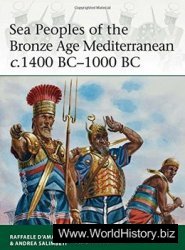 Sea Peoples of the Bronze Age Mediterranean c.1400 BC-1000 BC Author: Raffaele D'Amato and Andrea Salimbeti Osprey Publishing Elite, Book 204 2015 ISBN: 1472806816 Pages: 64 Language: English Format: EPUB Size: 19 MB Sea Peoples of the Bronze Age and Mediterranean features the latest historical and archaeological research into the mysterious and powerful confederations of raiders who troubled the Eastern Mediterranean in the last half of the Bronze Age. Research into the origins of the so-called Shardana, Shekelesh, Danuna, Lukka, Peleset and other peoples is a detective 'work in progress'. However, it is known that they both provided the Egyptian pharaohs with mercenaries, and were listed among Egypt's enemies and invaders. They contributed to the collapse of several civilizations through their dreaded piracy and raids, and their waves of attacks were followed by major migrations that changed the face of this region, from modern Libya and Cyprus to the Aegean, mainland Greece, Lebanon and Anatolian Turkey. Drawing on carved inscriptions and papyrus documents - mainly from Egypt - dating from the 15th-11th centuries BC, as well as carved reliefs of Medinet Habu, this title reconstructs the formidable appearance and even the tactics of the famous 'Sea Peoples'.
|
|

























 World History
World History









